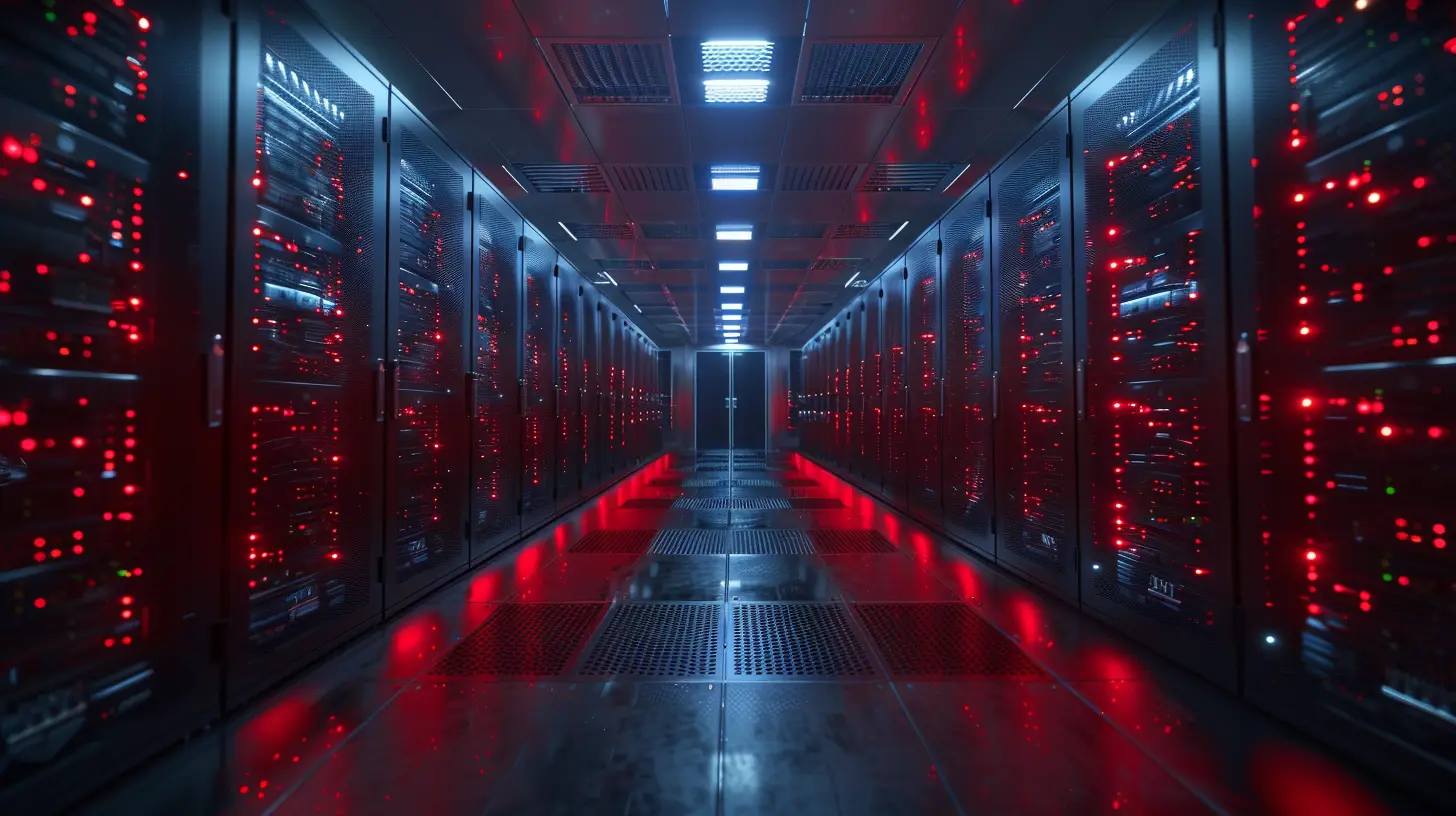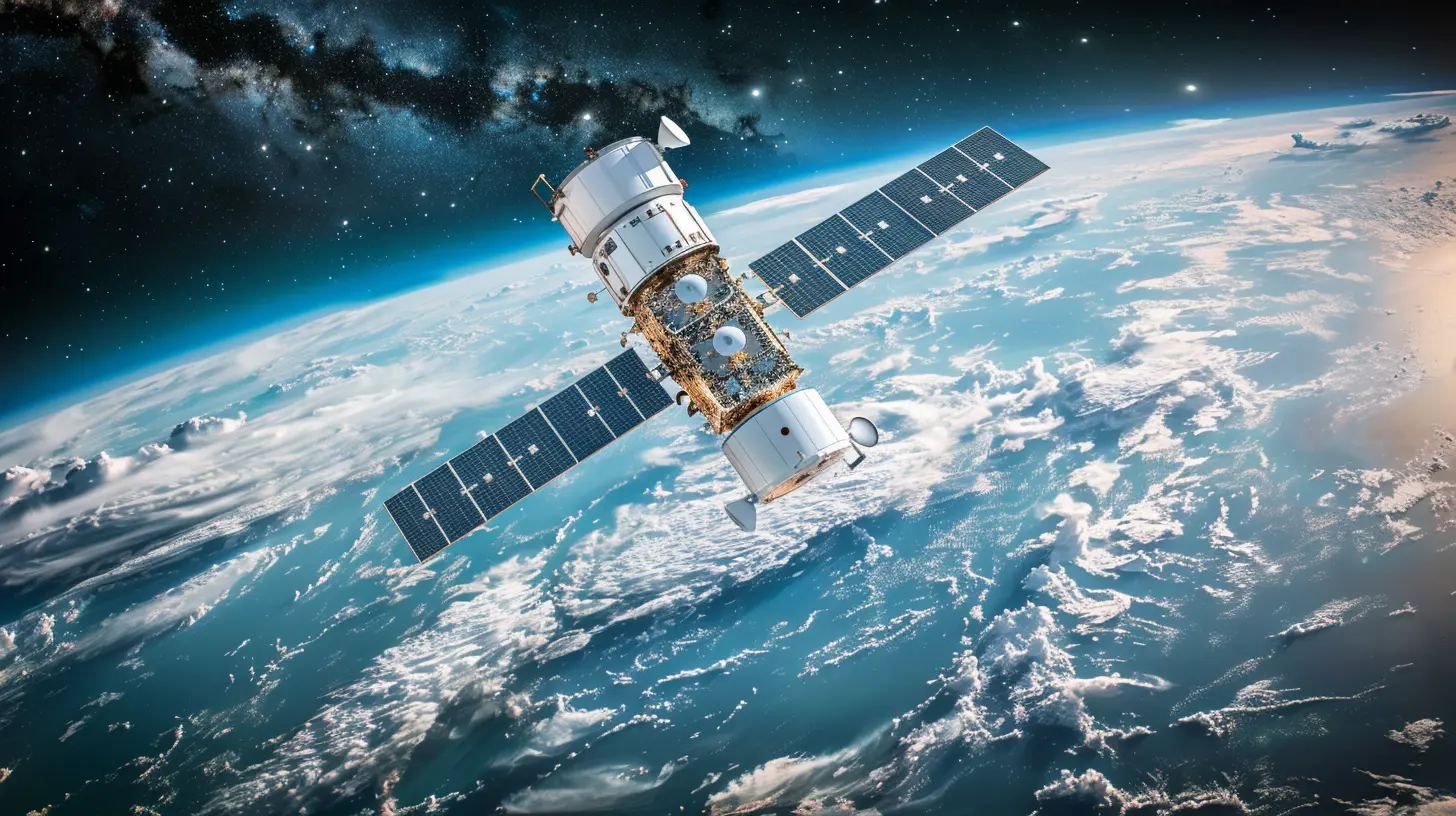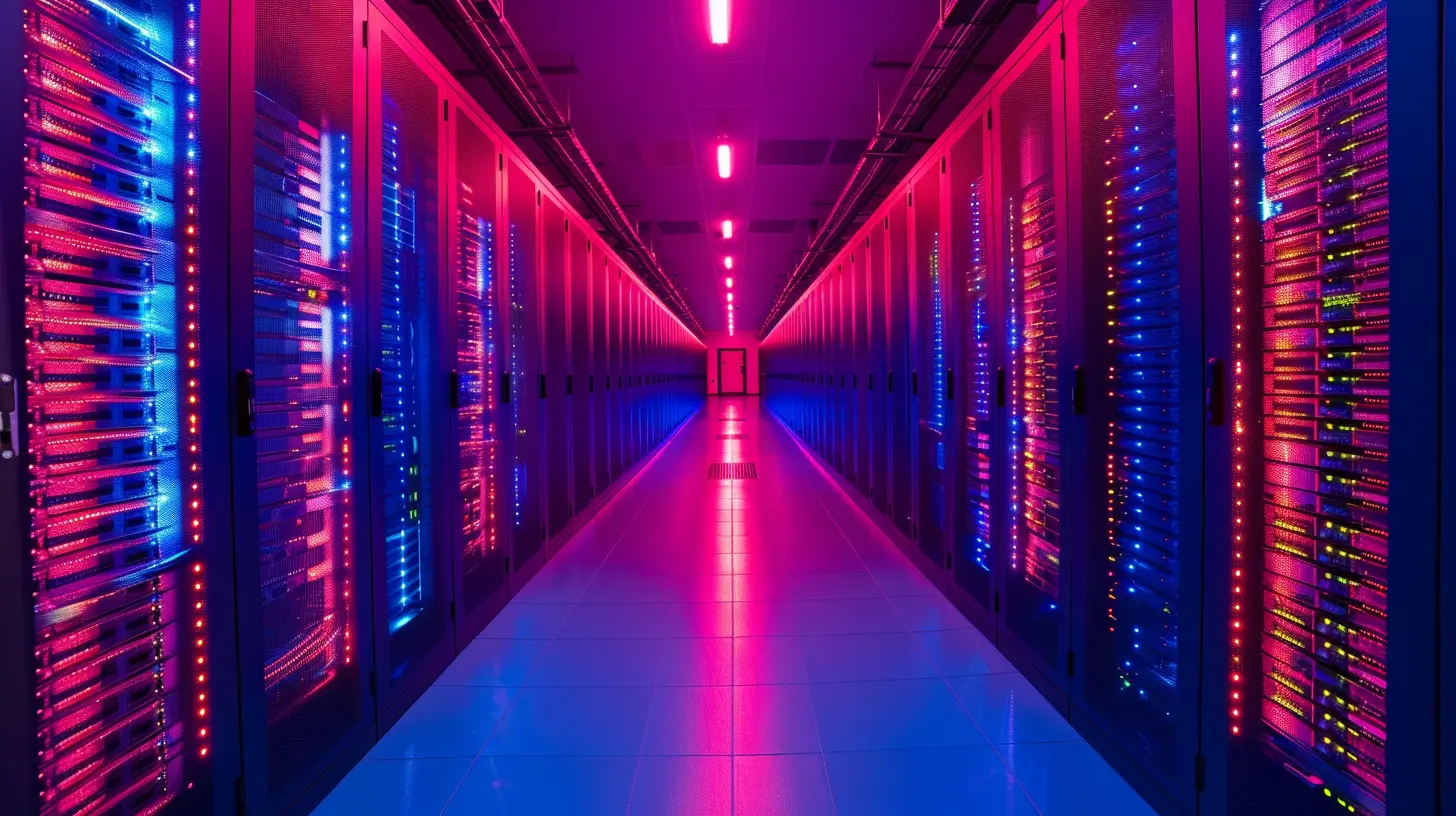Data Centers in Space: The Next Frontier for Cloud Computing
18 January 2025
Imagine a world where your Netflix binge or that critical Zoom call is powered by servers orbiting the Earth. Sounds like something out of a sci-fi movie, right? But in reality, the idea of data centers in space is no longer just a wild fantasy. It's becoming a tangible possibility as technology evolves and our hunger for cloud computing grows.
In this article, we’re going to explore why data centers in space might be the next big leap for cloud computing, what challenges lie ahead, and how this could revolutionize the tech world as we know it. Buckle up, because the future is about to get out of this world—literally!

Why Move Data Centers to Space?
So, why on Earth (or in this case, off Earth) would anyone want to place data centers in space? It’s a fair question. The answer involves a perfect storm of environmental, technological, and economic factors.First off, let’s talk about energy consumption. Data centers are notorious for being energy hogs. They require massive amounts of electricity to power not just the servers but also the cooling systems that prevent them from overheating. With worldwide energy consumption on the rise, finding alternative ways to power these centers is critical. Space offers an untapped reservoir of solar energy. Satellites and space-based systems can harness solar power far more efficiently than on Earth, where we’re at the mercy of weather patterns and day-night cycles.
Another crucial factor is real estate. On Earth, land is finite, and data centers take up a lot of it. Building these massive facilities in space frees up real estate for other uses on our home planet, while providing seemingly limitless room for expansion.
Then there’s the cooling advantage. Cooling is a major concern for Earth-based data centers. In space, temperatures in the vacuum can be extremely cold, particularly in the shadow of the Earth or other celestial bodies. This natural cooling could allow data centers to operate more efficiently, reducing the need for energy-intensive cooling systems.
Lastly, there’s the issue of latency. As we become more dependent on cloud computing, we need faster and more reliable data transfer. By placing data centers in low Earth orbit (LEO), companies could potentially reduce latency, bringing data closer to users around the world in a more direct manner.

How Would Space-Based Data Centers Work?
Alright, so the concept sounds cool, but how would it actually work? Building and maintaining data centers in space isn’t as simple as launching a bunch of servers into orbit. It’s a complex endeavor that involves several key components.Satellites as Data Centers
One of the leading ideas for space-based data centers is to use satellites outfitted with server technology. These satellites would orbit the Earth, storing and processing data just like traditional data centers do on the ground. The major difference? These satellites would rely on solar power and the cold vacuum of space to operate more efficiently.Communication and Latency
Now, you might be wondering, “If my data is in space, how do I access it?” Good question. Communication between Earth and space would take place via high-frequency radio waves or laser communication systems. These systems are already used by satellites today, but they’d need to be adapted for the massive amounts of data that cloud computing requires.And about latency—yes, technically, data has to travel a bit further to space and back compared to data centers on Earth. However, for satellites in LEO, the delay is minimal. We’re talking milliseconds—barely noticeable to the human eye or even most applications.
Maintenance and Repairs
One of the biggest challenges? Maintenance. If something goes wrong with a server on Earth, a tech can just hop in a car and fix it. Space? Not so easy. Companies would need to develop robotic systems or even partner with space agencies like NASA or private organizations like SpaceX to send up repair crews. While it sounds daunting, we’re seeing rapid advancements in autonomous systems, and it’s not out of the question that AI-powered robots could handle most of the grunt work.Data Security
Security is another major concern. Space is the final frontier, but it’s also lawless. There are no space cops (yet), so companies would need to invest heavily in securing their data centers from potential threats. This includes shielding them from cosmic radiation, cyberattacks, and even possible space debris. It’s a whole new ball game when it comes to security in space.
The Benefits of Data Centers in Space
Okay, let's break it down. What are the real-world benefits of moving data centers to space?1. Unlimited Energy Source
As mentioned earlier, space data centers could harness solar energy 24/7, without the interference of clouds or nighttime. This could reduce reliance on Earth-based power grids and significantly lower the carbon footprint of cloud computing.2. Reduced Carbon Footprint
Speaking of carbon footprints, traditional data centers are notorious for their environmental impact. According to some estimates, data centers consume around 1% of the world’s electricity and contribute to about 0.3% of global carbon emissions. Moving them to space, where they can run on solar power and benefit from the natural cold of the vacuum, could help mitigate these environmental concerns.3. Scalability
With virtually limitless space (pun intended), companies can scale their operations without running into the physical limitations they encounter on Earth. No more worrying about physical land or cooling constraints.4. Potential for Faster Data Access
While latency is a concern, space data centers could actually result in faster data access for certain regions. By placing satellites strategically around the planet, companies could create a global network that reduces lag and speeds up data delivery for users, particularly in remote or underserved areas.5. Disaster Resilience
Earth is prone to natural disasters—hurricanes, earthquakes, floods, you name it. Space? Not so much. Data centers in orbit would be far less vulnerable to these disasters, ensuring more reliable cloud services in times of crisis.
The Challenges Ahead
Of course, it’s not all sunshine and rainbows (solar-powered or otherwise). There are numerous challenges that must be addressed before we see data centers in space become a reality.1. Cost
Launching anything into space is expensive. Even with companies like SpaceX working to reduce the cost of space travel, it’s still a hefty price tag. Building and maintaining data centers in space could cost billions, if not more. And that’s before we even talk about the cost of repairs and upgrades.2. Space Junk
Space is already getting crowded with old satellites, rocket debris, and other junk. Adding data centers to the mix could exacerbate the problem. Companies would need to work on solutions to minimize the risk of collisions, whether that’s through advanced tracking systems, self-destruct capabilities, or even space-cleaning initiatives.3. Data Privacy and Regulation
Who governs space? That’s a tricky question. While international treaties exist, space law is still in its infancy. Companies would need to navigate complex legal waters to ensure that their data centers comply with both international regulations and the data privacy laws of individual countries.4. Technological Limitations
While we’ve made significant advancements in space technology, there are still plenty of technical hurdles to overcome. From the durability of hardware in the harsh space environment to the reliability of communication systems, there’s a long road ahead before space-based data centers become mainstream.The Future of Cloud Computing
So, where does this leave us? While we’re not quite there yet, the idea of data centers in space is more than just a pipe dream. The growing demands of cloud computing, coupled with advancements in space technology, are pushing us closer to a future where your data could be stored in the stars.It’s an exciting prospect, but one that comes with a lot of unknowns. Will space data centers become mainstream in the next decade? It’s hard to say. But one thing’s for sure: space is no longer just the domain of astronauts and rovers. It's becoming the next battleground for tech giants, and the race has only just begun.
If you think about it, the future of cloud computing might just be... out of this world.
all images in this post were generated using AI tools
Category:
Data CentersAuthor:

Reese McQuillan
Discussion
rate this article
23 comments
Marigold McMichael
How will space data centers revolutionize our approach to cloud computing?
February 2, 2025 at 7:59 PM

Reese McQuillan
Space data centers will revolutionize cloud computing by providing faster data processing with reduced latency, enabling global connectivity, and enhancing data security through remote storage. This will foster innovation and efficiency in data-intensive applications.
Thorne Bowman
Great article! The concept of space-based data centers is truly exciting and could revolutionize cloud computing. Harnessing the vastness of space for storage and processing could bring unprecedented efficiency and innovation. Looking forward to seeing how this develops!
January 30, 2025 at 9:09 PM

Reese McQuillan
Thank you for your enthusiasm! I'm excited about the potential of space-based data centers too. Stay tuned for future developments!
Owen Newman
Taking cloud computing to new heights—literally! Space-based data centers promise not just lower latency but also a zero-gravity boost for innovation. Let's just hope those servers don't get lost in the cosmic void while we're chasing bandwidth!
January 30, 2025 at 5:37 AM

Reese McQuillan
Thanks for your insights! The potential of space-based data centers is indeed exciting, but we’ll ensure our tech stays grounded—literally and metaphorically!
Isaac McCabe
Exploring data centers in space unlocks limitless potential for innovation—let's reach for the stars together!
January 29, 2025 at 8:26 PM

Reese McQuillan
Absolutely! The potential for space-based data centers is immense, paving the way for groundbreaking advancements in cloud computing and beyond. Let's innovate together!
Victor Hardy
The concept of data centers in space represents a significant advancement in cloud computing. By leveraging microgravity and cooling efficiencies, we can enhance data processing capabilities while reducing latency. This innovation could address the increasing demand for data storage and processing power in an ever-evolving digital landscape.
January 27, 2025 at 9:52 PM

Reese McQuillan
Thank you for your insightful comment! Indeed, space-based data centers could revolutionize cloud computing by leveraging unique environmental advantages to meet growing data demands.
Selina Wolfe
Space data centers are not just a novelty; they’re the future of cloud computing. With limitless potential and unparalleled efficiency, we’re reshaping how we store and process information—no apologies needed.
January 26, 2025 at 7:48 PM

Reese McQuillan
Absolutely! Space data centers indeed represent a groundbreaking evolution in cloud computing, offering innovative solutions for data storage and processing efficiency. The future is bright!
Darrow McGinnis
Wow, the idea of data centers in space is mind-blowing! 🚀 Just imagine the possibilities for cloud computing. It feels like we’re stepping into a sci-fi future—can’t wait to see how this evolves!
January 26, 2025 at 3:59 AM

Reese McQuillan
Absolutely! The potential for space-based data centers is truly exciting and could revolutionize cloud computing. Stay tuned for what’s next!
Rina McTigue
This article offers an intriguing glimpse into the future of cloud computing with space-based data centers. The potential for reduced latency and increased efficiency is exciting, but challenges like cost and infrastructure must be addressed. A fascinating concept worth exploring further!
January 25, 2025 at 8:20 PM

Reese McQuillan
Thank you for your insightful comment! I'm glad you found the concept intriguing. Addressing the challenges will indeed be crucial as we explore this exciting frontier.
Bethany McDowell
Beam me up, Scotty! Cloud storage with zero gravity sounds like a cosmic delight!
January 25, 2025 at 5:51 AM

Reese McQuillan
Thanks! It's an exciting concept—combining cloud tech with the vastness of space could revolutionize data storage and access!
Signe Wilkins
Incredible concept! Space data centers could revolutionize cloud computing and sustainability. Excited for the future!
January 24, 2025 at 7:57 PM

Reese McQuillan
Thank you! I'm glad you share the excitement—space data centers could indeed transform the industry while promoting sustainability.
Georgia McDowney
This article sheds light on an exciting development in cloud computing. The potential for data centers in space not only addresses Earth’s limitations but also opens new avenues for innovation. However, we must consider the environmental impact and logistics of such ambitious projects moving forward.
January 24, 2025 at 12:22 PM

Reese McQuillan
Thank you for your insightful comment! You're absolutely right—the potential benefits of space-based data centers are exciting, but we must carefully evaluate their environmental implications and logistical challenges as we explore this new frontier.
Caelum McKay
Exciting concept! Space-based data centers could revolutionize cloud computing, offering incredible efficiency and sustainability. Looking forward to future developments!
January 24, 2025 at 6:01 AM

Reese McQuillan
Thank you! We're excited about the potential of space-based data centers to transform cloud computing and enhance sustainability. Stay tuned for developments!
Margaret Vaughn
Space-based data centers are not just futuristic dreams; they represent the next logical step in cloud computing. By leveraging microgravity and abundant solar energy, we can achieve unprecedented efficiency, security, and scalability. The future of data storage is truly out of this world!
January 23, 2025 at 12:02 PM

Reese McQuillan
Thank you for your insightful comment! Indeed, space-based data centers could revolutionize cloud computing, harnessing unique advantages to enhance efficiency and scalability. Exciting times ahead!
Noora Green
The concept of space-based data centers presents exciting prospects for enhanced processing power and energy efficiency, but challenges in latency and cost-effectiveness must be carefully addressed for viability.
January 23, 2025 at 3:58 AM

Reese McQuillan
Thank you for your insight! Addressing latency and cost will be crucial as we explore the potential of space-based data centers in revolutionizing cloud computing.
Ronan Robinson
Exciting concept! Space data centers could revolutionize cloud computing as we know it!
January 22, 2025 at 8:13 PM

Reese McQuillan
Thank you! We're excited about the potential of space-based data centers to transform cloud computing by enhancing efficiency and accessibility.
Isolde McGee
Data centers in space represent a revolutionary leap for cloud computing—unleashing unparalleled scalability and resilience. Embracing this frontier will redefine connectivity, empower innovation, and elevate our digital future beyond earthly limits!
January 21, 2025 at 9:53 PM

Reese McQuillan
Absolutely! Space-based data centers could transform cloud computing by enhancing scalability and resilience, paving the way for groundbreaking innovations and connectivity beyond Earth. Exciting times ahead!
Marley McEachern
Who knew space could be the ultimate cloud? Excited to see where this goes! 🚀
January 21, 2025 at 1:52 PM

Reese McQuillan
Thanks! Excited to explore this new frontier together! 🚀
Chloe McFarland
Exciting prospects ahead! Space-based data centers could revolutionize cloud computing, enhancing efficiency and sustainability. The future is truly limitless!
January 21, 2025 at 5:25 AM

Reese McQuillan
Thank you! We're thrilled about the potential of space-based data centers to transform cloud computing and drive sustainability. The future indeed looks bright!
Kara McKeever
The concept of space-based data centers promises unprecedented scalability and reduced latency for global cloud computing. However, challenges like cost, energy efficiency, and data transmission speed must be addressed for viable implementation.
January 20, 2025 at 12:37 PM

Reese McQuillan
Thank you for your insightful comment! You're right; while space-based data centers offer exciting possibilities, overcoming challenges like cost and energy efficiency will be crucial for their successful implementation.
Maverick Luna
What an exciting concept! Space-based data centers could revolutionize cloud computing by enhancing efficiency and reducing latency. I can't wait to see how this technology evolves and the impact it will have on industries. It truly feels like we're on the brink of a new era!
January 20, 2025 at 5:44 AM

Reese McQuillan
Thank you! We share your excitement about the potential of space-based data centers to transform cloud computing. Stay tuned for more developments in this groundbreaking field!
Zephyros Parker
What an exciting vision for the future! Space-based data centers could revolutionize cloud computing, enhancing efficiency and accessibility. It’s inspiring to think about the possibilities that lie ahead!
January 19, 2025 at 9:45 PM

Reese McQuillan
Thank you! I'm glad you find the potential of space-based data centers exciting. The possibilities for innovation and efficiency are indeed vast!
Stephen McGlynn
What an exciting leap into the cosmos! Data centers in space could revolutionize cloud computing and make sci-fi dreams a reality. Cheers to the innovators pushing boundaries and bringing us closer to a stellar future! 🚀✨
January 18, 2025 at 8:51 PM

Reese McQuillan
Thank you! Exciting times ahead as we explore the possibilities of space-based data centers and their potential to transform cloud computing! 🚀✨
Quorra McEachern
Exciting concept! Looking forward to future developments!
January 18, 2025 at 5:59 AM

Reese McQuillan
Thank you! We're excited about the possibilities too!
MORE POSTS

What Does 5G Mean for the Future of Smart Homes?

How to Choose Video Editing Software Based on Your Needs

How to Customize Your Smartphone for a Personalized Experience

How 5G Could Transform the Entertainment Industry

Editing on a Budget: Affordable Video Editing Software

Wearable Tech Meets Laptops: Exploring Future Trends in Mobile Computing

The Role of Artificial Intelligence in Shaping Modern Fintech Solutions

Exploring the Energy Efficiency of Proof of Stake Blockchains

How to Extend the Lifespan of Your Computer Hardware

The Impact of RAM Latency on Gaming: What You Need to Know

The Latest in Smartphone Charging Technology

Enhancing Your Entertainment Hub with a Smart Display

Smart Displays and Children: Educational Content and Parental Controls

How Blockchain Technology Is Enhancing Data Center Security